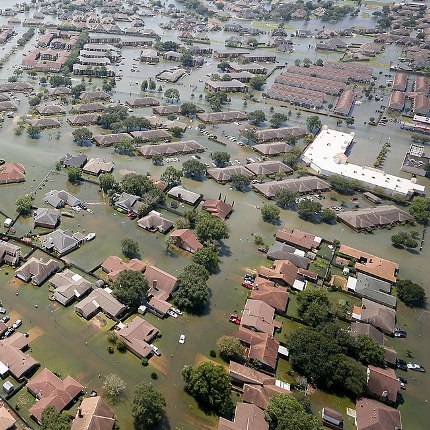 New research shows that real estate properties in areas affected by extreme weather and sea level rise are losing value relative to less exposed properties.
New research shows that real estate properties in areas affected by extreme weather and sea level rise are losing value relative to less exposed properties.
The effects are already substantial, but they may point to a looming collapse as climate change makes coastal communities untenable.
Work by Harvard researchers published last week and highlighted by the Wall Street Journal finds that, after accounting for an array of other factors, home prices have appreciated more slowly in lower-lying areas of Miami-Dade County, particularly Miami Beach. A broader study using data from Zillow, still under peer review, found that properties exposed to rising nfipsea levels sell at a 7% discount to comparable properties not subject to climate-related risk.
As many as 13% of Americans are still convinced climate change isn’t happening at all, and 30% are confident that humans play no role in it.
But real estate prices now seem to confirm the chestnut attributed to author Philip K. Dick: “Reality is that which, when you stop believing in it, doesn’t go away.”
Even those who don’t believe in climate change, or have never been hit by a hurricane, are nonetheless seeing an impact on their property values. That foretells inevitable and large economic impacts in vulnerable areas, but could have the broader positive effect of discouraging risky investment.
These impacts are unfolding even despite large taxpayer-funded outlays that effectively subsidize flood-prone real estate markets by providing artificially cheap flood insurance. The National Flood Insurance Program – the only flood insurance available in many such markets – sets rates and risk measures using outdated flood maps, and does not incorporate projections for climate change. The resulting actuarial imbalances have forced the program to run up more than $30 billion in Treasury borrowing as major weather events accelerate.
President Trump signed a disaster relief bill last October that included forgiveness for over half that debt. That is an effective admission that budget spending is required to prop up the NFIP’s broken model, even as the Trump EPA attempts to downplay humans’ role in climate change through greenhouse gas emissions. Florida’s Sun Sentinel recently reported that, even after reforms in 2012 and 2014 aimed at making the NFIP more solvent, most homeowners are seeing annual premium increases below 5 percent.
Source: Fortune

